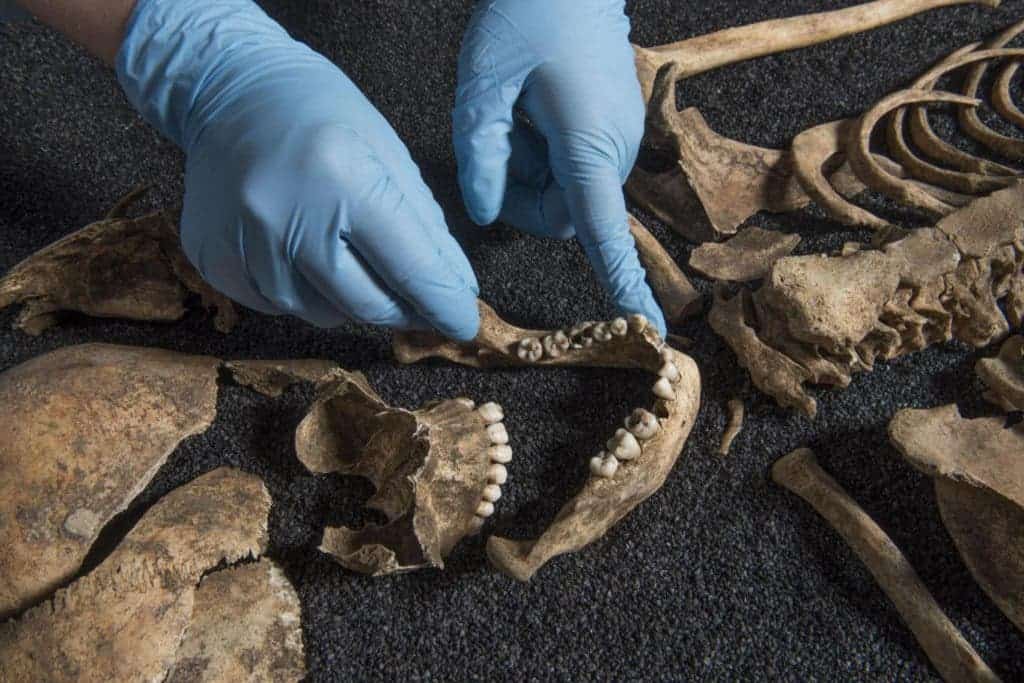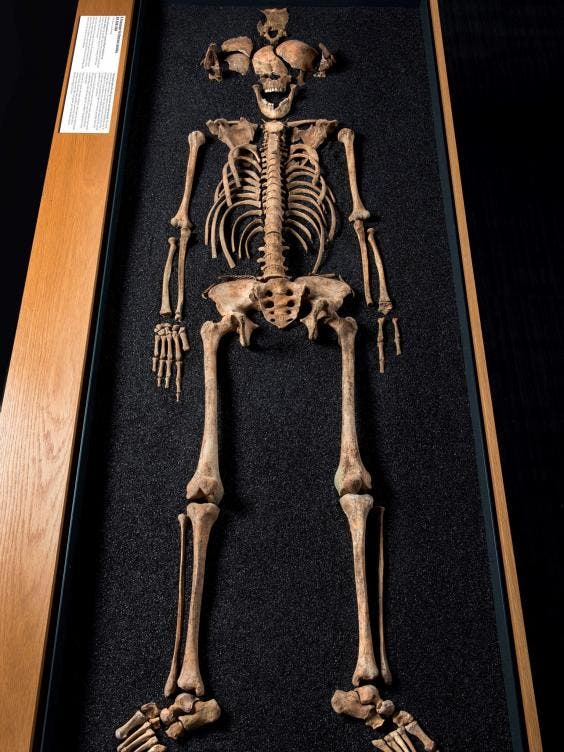Two ancient skeletons discovered in a Southwark cemetery cast a new light on the Roman Empire’s and London’s history, and could indicate a Chinese trading community once called the island home.

Image credits Museum of London.
Dr Rebecca Redfern, curator of human osteology at the Museum of London, has revealed two sets of remains found in a London cemetery which she believes are likely of Chinese origin. The bones were found at a site in Lant Street, Southwark, in a group of over 20 sets of human skeletons dated from between the 2nd and 4th centuries AD. Dental enamel samples from the remains were examined using cutting-edge techniques, revealing the surprising origin of the two skeletons.
“This is absolutely phenomenal. This is the first time in Roman Britain we’ve identified people with Asian ancestry and only the 3rd or 4th in the empire as a whole”, Redfern told BBC Radio 4.
Previous archaeological discoveries have shown that the city of Londinium, as it was known in Roman times, had a multicultural population and was an important trading hub. However, it was always believed that its people included only residents of the Roman Empire. The skeletons fly in the face of this traditional belief that Roman Britain was a pretty homogeneous society.
It also suggests that the Roman and Chinese empires had much more interaction than previously believed. They also raise the possibility of trade taking place between the two nations outside of the famous Silk Road — London is a good distance away from the route. The findings raise the possibility that Chinese traders settled in the area, and may have even set up their own trading communities.

Image credits Museum of London.
This is only the second time an individual of possibly Chinese origin has been found at a Roman site, the first being the discovery of a man with Asian ancestry man in Vagnari, Italy.
“The expansion of the Roman Empire across most of western Europe and the Mediterranean, led to the assimilation and movement of many ethnically and geographically diverse communities,” wrote Dr Redfern in The Journal of Archaeological Science.
The archeological community is still divided on what to make of the finding. Two skeletons is still a meager testimony of a whole community living in Roman Britain.
“Its power and wealth meant that it also had trade connections for raw materials and products, such as silk throughout Europe, Africa and also to the east, including India and China. Many people travelled, often vast distances, for trade or because of their occupation, for example in the military, or their social status, for example if they were enslaved,” Dr Redfern added in her paper.
“It may well be that these individuals were themselves or were descended from enslaved people originating from Asia, as there were slave-trade connections between India and China, and India and Rome.”
The full paper “Identifying migrants in Roman London using lead and strontium stable isotopes” has been published in the Journal of Archaeological Science.






